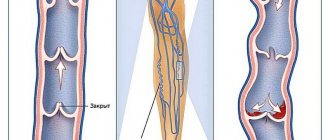Take the first step
and make an appointment with your doctor!
Virginity is a medical, physiological, and socio-psychological concept at the same time. It receives a lot of attention in human culture, especially in a society with traditional moral principles. Virginity is often seen as the physical expression of a girl's chastity and her high spiritual principles, which is reflected in the synonym "innocence." Its loss often marks a woman's transition to adulthood, a process that was previously irreversible. Today, the achievements of modern medicine make it possible to restore virginity (hymenoplasty). Technically, this is a relatively simple operation, but many socio-psychological and ethical issues are associated with it. And before deciding on it, a woman needs to understand the purpose, advantages and disadvantages of this procedure.
Medical aspects of virginity
In the medical sense, virginity in women means the intactness of the hymen, an elastic membrane of connective tissue that partially covers the entrance to the vagina. Its biological role is not fully understood, but most experts are inclined to believe that it protects the genital tract from infection. Normally, the hymen does not completely cover the vagina - it has a small hole for the release of menstrual blood.
The destruction of the hymen (defloration) usually occurs during the first sexual intercourse. It can also be caused by masturbation, although in practice this rarely happens. Depending on the thickness of the membrane, its saturation with blood vessels and nerves, defloration may be accompanied by:
- Bleeding – from small to quite heavy;
- Painful sensations - not only at the moment of sexual intercourse, but also after it.
It must be borne in mind that these phenomena during defloration are the norm, but not obligatory:
- in some cases, the hymen does not tear, but simply stretches - in this case, the loss of virginity is not accompanied by severe pain or bleeding.
- on the contrary, with a large thickness of the membrane and its saturation with nerve endings, the first sexual intercourse in a girl can cause intense pain, up to the inability to continue sexual contact.
Some women have a completely absent hymen from birth, so their first sexual intercourse goes without problems, and virginity is purely psychological in nature. Also in medical practice, there are cases where after sexual contact the connecting membrane was completely restored. Therefore, it is incorrect to identify virginity exclusively with its state.
The hymen undergoes changes over time. For example, after 20-22 years, the number of elastic fibers in it decreases, which is why defloration at this and older ages is often accompanied by pain and heavy bleeding. It is believed that the most optimal age for losing virginity is 15-19 years, when the membrane stretches well and sexual intercourse causes virtually no difficulties.
Losing virginity (in the medical sense) does not always occur due to sexual intercourse or masturbation. It can also be caused by household injuries, the use of hygienic tampons, surgical interventions, and even childbirth if sperm enters the woman’s genital tract without penetration as such. For medical reasons, artificial defloration may be prescribed - for example, if the hymen is abnormally dense and interferes with natural sexual intercourse.
What is the hymen?
The hymen is a thin septum that is located at the entrance to the vagina, usually at a depth of 2-4 cm.
The hymen has one or more holes so that menstrual flow can leave the body during menstruation. Typically, the hole in the hymen is large enough to accommodate a finger or tampon without damaging the hymen itself.
What is deflowering?
It would be correct to talk about deflowering only after the girl has had her first sexual contact. After the first sexual intercourse, a girl’s hymen is usually damaged.
However, there are situations where the hymen becomes damaged due to reasons other than sex. In this case, the girl is still considered a virgin, because she has not yet had intimacy with a man.
You can damage the hymen not only during sex
There are quite a few cases where the hymen was damaged in girls who were not sexually active.
For example, the hymen can be damaged during cycling, gymnastics, or horse riding. You can also damage the hymen during masturbation if you insert your fingers or various objects into the vagina. If you use large tampons during your period, you can also damage your hymen. Sometimes a girl who has not yet begun sexual activity may require gynecological intervention, during which the gynecologist himself may damage the hymen.
All these cases fit into the term “traumatic damage to the hymen” and have nothing to do with deprivation of virginity. As we agreed earlier, deflowering is talked about only after sexual intimacy with a man.
Does deflowering always cause blood?
No, not always. It is wrong to judge whether a girl is a virgin by whether she bled the first time she had sex or not. Often blood appears a few minutes or hours after the first sexual intercourse, or does not appear at all.
Is it possible to examine or feel the hymen yourself?
Even though the hymen is not located so deep in the vagina, it is impossible to see it on your own. It is also not recommended to “feel” the hymen with your fingers, since during these manipulations you can accidentally damage the hymen or introduce an infection into the vagina.
Is it possible to find out if I have a hymen without going to a gynecologist?
No girl can know for sure what “condition” her hymen is in. The hymen may be slightly torn even if you haven't had sex yet, or it may remain intact even after your first sexual intercourse.
Only a gynecologist can determine whether the hymen is intact or already damaged during an examination in a chair.
Can the hymen “overgrow” if you don’t have sex for a long time?
No, it's practically impossible. Once you lose your virginity, you will not become a virgin again, even if you are not sexually active for several years in a row.
Is it possible to restore the hymen?
Yes, you can. Almost any gynecologist can restore the integrity of the hymen. In medicine, this procedure is called hymenoplasty, or, less commonly, refloration.
Who may need hymen restoration?
Most often, hymenoplasty is resorted to for social or religious reasons. In some cultures, a woman's life may be at risk if the groom suspects a missing hymen on the wedding night. At the same time, it will not matter to others under what circumstances the hymen was damaged (perhaps the girl is really still a virgin, but the hymen was damaged during gymnastics, etc.) Of course, in these cases, restoration of the hymen is something more than just cosmetic procedure.
Also, girls who, having once made a mistake, often turn to gynecologists and want to correct it. There is nothing shameful in this and you should not blame yourself for anything. It is impossible not to mention the victims of rape, who, of course, are also not guilty of anything.
There are cases when the procedure to restore the hymen is performed on married women who have given birth: for example, if she and her husband wanted to add some variety to their sex life.
There are many different reasons for a woman to want to restore her hymen, and the main indication for hymenoplasty is the woman’s desire.
Who is contraindicated for hymen restoration?
There are no absolute contraindications to restoring the integrity of the hymen. However, before the procedure you will need to undergo a list of examinations, including a smear for flora. If a smear shows that you have inflammation of the vagina, the procedure to restore the hymen will have to be postponed until the inflammation has passed.
How is the hymen restored?
There are several methods for restoring the hymen: it all depends on the reason that brought you to the gynecologist.
Stitching the hymen
If restoration of virginity is urgently required (for example, a wedding will take place in a week), then the hymen is usually sutured with special suture material (threads). These threads hold the individual pieces of the hymen together, giving the sexual partner the same sensations as during sex with a virgin. During sex, a woman may also bleed (but not always, because even “real” virgins do not always bleed).
Advantages of this procedure:
- not dear
- takes no more than 30 minutes
- Recovery after the procedure takes only a few hours
Disadvantages of this procedure:
- the effect lasts no more than 2 weeks: after 2 weeks the threads will dissolve and the hymen will become the same as before the operation
- during the examination, another gynecologist will be able to understand that an operation was performed to restore the hymen (that is, it will not be possible to “deceive” the gynecologist)
Three-layer hymenoplasty
This procedure requires more time and effort on the part of the gynecologist, but the results of three-layer hymenoplasty are worth it. During this procedure, the gynecologist stitches together fragments of the hymen, also capturing areas of the vaginal mucosa. Due to this, a new hymen is practically formed, which cannot be distinguished from the “real” one.
Advantages of this procedure:
- if a woman is not sexually active, then the effect of “virginity” lasts for 2-3 years
- The “new” hymen will no longer be any different from the “real” one after 2-3 weeks, and even an experienced gynecologist will not be able to understand that you have had this operation (you can “deceive” the gynecologist)
Disadvantages of this procedure:
- more expensive
- lasts about an hour
- Recovery after surgery takes more than a week
- During intercourse there may be severe pain or a lot of blood may appear
Who can find out about this?
As a rule, in clinics that provide hymen restoration services, the principle of anonymity applies. That is, you can provide a fake first and last name, or information about you will be kept secret from everyone (including from your mother, local doctor, gynecologist at your clinic, fiance, etc.)
Will my partner feel the difference?
Regardless of the method of hymen restoration, your sexual partner will not be able to feel the difference and find out that you have already been sexually active before him.
Social and psychological aspects of virginity
To understand why some women undergo surgical restoration of their virginity, it is necessary to take into account the social, psychological and cultural aspects of this phenomenon.
In the vast majority of modern and ancient cultures, female virginity is given great importance, even religious significance. The physiological state of the hymen is associated with chastity, the personal honor of a young girl. This is of particular importance in the context of sexual life and marital relations. In countries with dominant Abrahamic religions (Christianity, Islam or Judaism), losing virginity before marriage is considered an immoral and sinful act, dishonoring not only the woman herself, but also her family.
In some ancient cultures and modern traditional societies, virginity takes on religious significance:
- for example, the priestess of the ancient Roman goddess Vesta could only be innocent girls;
- in Christianity, Islam and some other religions, monasticism is widespread, in which virginity is associated with purity of thoughts and devotion to God;
- To this day, some peoples have preserved rituals of ritual loss of virginity - in this sense, it is, as it were, sacrificed to a deity.
Take the first step
make an appointment with a doctor!
Attitudes towards female virginity and its loss are also influenced by gender roles. In patriarchal cultures, it is believed that only her husband has the right to deflower a girl. In this sense, the loss of virginity is seen as a sign of a woman’s submission and devotion to her chosen one. Accordingly, the deprivation of her innocence by a man is perceived by him and society as a symbol of power over her. Associated with this is a custom such as the right of the first wedding night.
Another aspect associated with virginity is the change in a woman's social status. The loss of innocence as an irreversible process (before the advent of modern methods of restoring it) is considered as a sign of a change in the social role of a girl from a “child” to a “woman.” This is expressed, for example, in the custom of publicly hanging a sheet with traces of blood after the first wedding night. In some traditional societies, the ritual of initiating a girl by depriving her of her virginity in one way or another is still common (not necessarily through sexual contact).
Today, due to changing social roles and liberalization of sexual life in developed countries, attitudes towards virginity are also changing. Her loss is less and less seen as a significant event; it loses its symbolic meaning as a sign of chastity and innocence. Often it is perceived not as an advantage, but as a disadvantage, a sign of sexual enslavement and inexperience - with a corresponding disdainful attitude towards it.
Why do women undergo hymenoplasty?
Based on the considered medical and socio-psychological aspects of virginity, we can highlight the following reasons why women turn to a gynecologist for hymenoplasty:
- Restoring virginity after forced sexual intercourse as a way to get rid of the physiological reminder of the violence committed;
- Out of fear of public censure or one’s own sense of shame for committing an immoral act (extramarital sex, masturbation, etc.);
- For religious reasons or as a sign of renunciation of the previous “depraved” way of life;
- To diversify your intimate life and gain new sexual sensations.
As a rule, women undergo hymen reconstruction surgery voluntarily. However, in some communities it is often driven by social pressure and is carried out against the poly patient (eg by her relatives or spouse).
Advantages and disadvantages of the operation
Hymenoplasty has its pros and cons. It is important to familiarize yourself with them before surgery.
Advantages:
- The operation allows women who have experienced abortion or childbirth to restore the hymen.
- With long-term hymenoplasty, the result is guaranteed to last until the first sexual intercourse.
- Both partners will experience the most natural sensations at the moment of contact.
- If necessary, along with the procedure for returning virginity, surgery is sometimes performed to reduce the size of the vagina.
The only disadvantages of the procedure are its pain and the fact that the woman will have to experience some discomfort during rehabilitation.
How is virginity restored?
This relatively simple operation involves surgical reconstruction of the hymen. It is performed several months or years after the loss of virginity - this is necessary for complete tissue restoration after defloration. The procedure takes place on an outpatient basis or in a day hospital, using local or general anesthesia.
Depending on the reasons and for what purpose a woman undergoes this operation, it can be of two types:
- Short-term restoration of virginity . This type of hymenoplasty is used when the hymen needs to be restored for several days - for example, before the wedding night. Its fragments are stitched together with a thin self-absorbing thread, which disintegrates within 10-12 days. The flaps of tissue themselves do not grow together, but during sexual intercourse the sutures are torn, which causes bleeding. This procedure lasts approximately 15 minutes and is performed under local anesthesia; the patient can immediately go home.
- Long-term restoration of virginity . This is a more complex operation, which consists in recreating the anatomical structure of the hymen even in the absence of its fragments. The membrane itself is formed from a piece of tissue taken from the back wall of the vagina. With its help, the entrance to the vagina is first strengthened, then the film itself is recreated. The procedure lasts approximately 45 minutes and is performed under general anesthesia. It provides long-term results indistinguishable from natural hymen. After surgery, the patient is discharged after a 2-hour observation period, but is followed by a 3-week recovery period for the sutures to heal.
Take the first step
make an appointment with a doctor!
When hymenoplasty is performed correctly, a high-quality cosmetic effect is ensured in both cases. Even a professional gynecologist cannot distinguish “long-term” virginity after its healing from the real one.
LONG-TERM HYMENOPLASTY HOW LONG DOES IT LAST?
Short-term: under local anesthesia. Long-term: under general anesthesia, at the request of the patient - under local anesthesia. How long does the operation take? Short-term: 20-30 minutes. Long-term: 40-60 minutes and 1-2 hours under medical supervision after the intervention.
What you need to know about hymenoplasty? Hymenoplasty is a surgery to restore the hymen, also known as virginity restoration. There are two methods of recovery - short-term for 7-10 days and long-term, in which the result lasts up to 3 years. Both methods allow you to return the hymen in the most natural form. How is hymenoplasty done? Hymenoplasty is performed by a surgeon who restores the hymen.
The doctor sews the tissues together so that they block the entrance to the vagina. In short-term hymenoplasty, the surgeon uses the remains of the hymen. Pieces are used if they remain in the vagina and are not too thin.
LONG-TERM HYMENOPLASTY
Short-term: 3-5 days while the threads dissolve. Long-term: 30 days while the threads dissolve. Consequences. Short-term: does not cause disruptions in the menstrual cycle, does not affect the ability to give birth. Long-term: swelling and numbness 2-3 days after the intervention, minor pain may persist for up to 7 days. First sexual intercourse after recovery. Short-term: with bleeding, almost painless.
Long-term: with bleeding, may be slightly more painful than the first defloration. How long does the effect of the operation last? The duration of the effect depends on the type of surgery performed. With short-term hymenoplasty, the effect lasts for 15-20 days, after which the threads dissolve and the tissues separate. With long-term hymenoplasty, the effect lasts up to three years. Is it possible to determine that the girl had hymenoplasty? It is impossible to distinguish the restored hymen from the real one during sexual intercourse.
After restoration, it has the same elasticity; the sensations during defloration for a man are no different. The gynecologist can determine that the girl underwent surgery during the recovery period, when the threads have not yet dissolved. The doctor is obliged to maintain medical confidentiality, so restoring virginity is completely confidential.
LONG-TERM HYMENOPLASTY HOW LONG DOES IT LAST?
Indications and contraindications. There are no medical indications for the operation; it is performed at the woman’s request. Contraindications include: ● sexually transmitted diseases, HIV infection, hepatitis, ● vaginal microflora disorders, ● blood clotting disorders, ● acute stage of viral infection with high fever, ● pregnancy, including at an early stage, Why should you contact an experienced doctor. Contacting an inexperienced doctor risks the fact that the threads may separate ahead of schedule and the hymen may rupture.
How long does recovery take? Short-term: 5-7 days. Long-term: 2 weeks. Abstinence period after surgery.
Short-term and long-term hymenoplasty - differences: Who is it suitable for? Short-term: girls who began to be sexually active 2-3 months ago. Long-term: for women who have given birth and are sexually active and who lost their virginity a long time ago. How it's done.
The doctor sews them together so that they form a single septum in the vagina, leaving holes for the passage of menstrual blood. Long-term hymenoplasty uses tissue from the vaginal mucosa. The surgeon separates the upper layer of the mucous membrane at the entrance to the vagina and stitches the individual pieces together in the same way as when working with the remains of the hymen.
HYMENOPLASTY
Complications are also possible: pain after surgery, swelling and inflammation. You should undergo hymen restoration from an experienced surgeon: ● The doctor will tell you about restoration methods and help you choose the right one. ● Conduct a comprehensive examination before surgery and, if necessary, refer for preliminary treatment. ● He will select appropriate anesthesia and monitor your condition during the period of recovery from anesthesia. ● Ensures the confidentiality of contacting the clinic and performing the operation.
see also
- HYMENOPLASTY LONG-TERM PRICE IN IVANTEEVKA
Areas of the hymen are stitched with threads, which dissolve after some time. Such threads are used in order not to expose delicate…
- LONG-TERM HYMENOPLASTY BEFORE AND AFTER PHOTO
The period of suture resorption is long-term, up to 35 days. During this time, complete fusion of all sutured edges occurs, resulting in long-term…
- LONG-TERM HYMENOPLASTY
They plan to perform the operation in the middle of the menstrual cycle. 10 days before hymenoplasty, a woman is strongly recommended to stop using...
- LONG-TERM HYMENOPLASTY PRICE
Restoration of the hymen (Hymenoplasty) Labiaplasty. Restoring virginity. Defloration. Intimate laser rejuvenation. Plastic...
- BLEPHAROPLASTY HOW LONG DOES THE RESULT LAST?
Swelling may be associated with a hereditary predisposition. Details in the article - swelling under the eyes. Eye mesotherapy is a procedure that...
Tags
hymenoplasty, lasts, long-term, how long
Preparation for hymenoplasty
Although this operation is considered one of the simplest in intimate surgery, it requires certain preparatory measures. Initially, the patient undergoes diagnostics, including:
- Visual examination by a gynecologist;
- Blood test (general, biochemical, infection, coagulation, group and Rh factor);
- Smear for flora and vaginal infections;
- Electrocardiogram and x-ray;
- Video colposcopy of the vagina.
Examinations are necessary to identify possible contraindications to surgery - for example, bleeding disorders, vaginal infections, inflammatory pathologies of the genital organs, endometritis, genital herpes, cervical erosion, cancer, etc. Only after the patient has undergone diagnostics can the doctor decide to perform hymenoplasty .
Another important aspect of preparation for hymenoplasty is the psycho-emotional state of the patient. Most often, this operation is carried out at the woman’s own request, that is, her subjective motives play a significant role in the decision to restore virginity. In some cases, professional ethics obliges the doctor to refuse this service to the patient. Therefore, before surgery, a woman always undergoes an examination by a psychiatrist or psychotherapist to determine if she has psycho-emotional disorders that provoke irrational actions.
Scandal surrounding the family of famous rapper TI
The public, especially supporters of feminist ideas, were very excited by the statement of rapper TI (K. D. Harris Jr.), who said that he takes his daughter to the gynecologist every year to check her virginity. This unpleasant, humiliating and medically questionable examination is designed to determine the presence of a hymen.
According to the vast majority of readers, this limits the freedom of a girl’s personal life and provokes a discussion of her intimate organ. And most importantly, such an examination does not confirm her integrity. After all, there is no real connection between intimate relationships and rupture of the hymen. This is exactly what users wrote in the comments under the rapper’s interview.
Joke about virginity 1
Recommendations after hymenoplasty
After the patient undergoes the procedure, her genitals should recover. During this period, she must follow the following recommendations:
- Avoid any sexual activity, including intercourse and masturbation;
- Avoid visiting baths, saunas, swimming pools, open reservoirs;
- Do not take a bath - only shower is allowed;
- Do not eat foods that lead to constipation or bloating; for the first days you can only eat liquid meals;
- Avoid heavy physical activity and intensive fitness classes.
After hymenoplasty, a woman may experience such phenomena as discomfort when walking, mild bleeding, numbness of the external genitalia, and mild pain. This is a normal reaction of the female body to the healing of tissues injured during surgery. If you follow medical recommendations, these phenomena disappear within a few days.
How is the preparation going?
The operations are performed in an outpatient office or the patient is admitted to the department for a day hospital. Even long-term hymenoplasty does not require the woman to be hospitalized.
The surgical procedure is recommended to be performed under local anesthesia. At the request of the woman herself, general anesthesia is sometimes used if there are no contraindications to its use.
Before the operation, the patient is asked to submit materials for a clinical trial. The doctor will need the results of the following tests:
- blood biochemistry;
- general urine analysis;
- general blood analysis;
- research for the presence of markers of viral infections;
- determine the parameters of the hemostasis system.
They plan to perform the operation in the middle of the menstrual cycle. 10 days before hymenoplasty, a woman is strongly recommended to stop drinking alcoholic beverages and smoking.
You should not take any medications before surgery for several weeks (without your doctor's knowledge). It is especially important to exclude drugs that affect blood clotting.
Risks and complications after hymenoplasty
Hymen restoration is a fairly safe operation. But, like any other surgical intervention, it carries certain risks for the female body:
- the introduction and development of infection of the genital organs when using insufficiently disinfected instruments or due to unsanitary conditions;
- injury to the tissues of the genital tract and associated inflammatory processes;
- narrowing (atresia) of the vagina, making normal sexual intercourse difficult or impossible.
The first two complications, as a rule, arise only if the hymenoplasty technique is violated - for example, by an unqualified doctor in an underground or poorly equipped clinic. If the operation is performed by a trained and experienced specialist in a modern medical facility, the likelihood of such consequences is negligible.
The situation is more complicated with possible vaginal atresia. It can also occur if the operation was performed according to all the rules. Even an experienced specialist cannot fully control the behavior of tissues after the procedure and completely eliminate the formation of scar tissue.
Indications and contraindications
This procedure is performed solely at the request of the patient. There are no medical indications for hymenoplasty.
Doctors identify the following contraindications for surgery to restore the hymen:
- inflammation and infection of the reproductive system;
- oncology (regardless of location);
- blood clotting disorder;
- rashes and inflammation on the skin of the perineum;
- genital herpes in the acute stage;
- During pregnancy and breastfeeding;
- benign tumors of the genital organs;
- severe diseases of the cardiovascular and respiratory systems.











